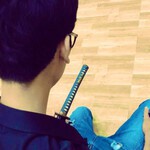Leaderboard
Popular Content
Showing content with the highest reputation on 10/22/2020 in all areas
-
The sword is a family heirloom, rather than a newly-made arsenal sword. The bearer had military mounts made for his family sword. There are many such short swords repurposed for military use. They are often erroneously referred to as "pilot's swords", with the assumption being that pilots would use shorter swords, but I think this site has disproven that claim fairly comprehensively. The inscription (the ones in blue are written by the cutting tester) 乳割土壇払 Chichi-wari dotanbarai 天保十年二月日於江府作 Tenpō jūnen nigatsujitsu oite Kōfu saku 会津住元興 Aizu-jū Moto-oki 同年十月二日於千住神谷清治試之 Dōnen jūgatsu futsuka, oite Senjū Kamiya Kiyoharu tamesu kore Cut across the chest Made in Tenpō 10 (1839) February, Kōfu Moto-oki from Aizu province/city Cutting test performed in the same year, October 2nd, at Senjū, by tester Kamiya Kiyohara So the swordsmith Moto-oki made this sword in February of 1839, and someone had it tested by cutting it across the chest of a cadaver (probably) in October of 1839. I didn't find this tester's name in Guido's list of famous testers, or anywhere else on the internet, so it looks like the tester is someone lost to history. It also looks like the tester didn't have room to write everything on one side, so he continued on the other side, which is slightly unusual. The longer sword is a typical military/arsenal blade.9 points
-
6 points
-
I just wanted to thank John ( bigjohnshea ) for allowing me to be the new caretaker of his Tanemitsu Tanto. John was a pleasure to work with and made the whole process painless. I received the Tanto today and it was shipped fast, wrapped extremely well and more beautiful in person. It will be a treasured addition to my meager collection. Thank you again. MikeR5 points
-
Steve, I LOVE the way you take the time to format your answer and even highlight in colour. I think I speak for us all when I say huge thanks and we all appreciate it.4 points
-
Hi Tony, Recently I wrote someone saying that there hadn't been too many higher end pieces posted in the fittings section. That statement got popped like a soap bubble. I've seen this design be Shozui on 2 or 3 tsuba. One is published in one of the collection books: Hartmann, Lundgren, Carlos Monziono? Then I saw a great one behind glass at the 2014 DTI. Yours might be the one I saw then? If I were to ever own another Shozui, I think this is the design I would want to own. Well done.4 points
-
3 points
-
The Japanese army had problems with getting enough swords, and relaxed their original specifications somewhat. They also had sword buying drives where they bought them from the general public in Japan, and accepted blades shorter than regulation. The pdf below explains it in more detail. gunto call up 12-23-2017.pdf3 points
-
Thought I'd share an interesting tsuba from my personal collection. By Hamano Shozui aka Masayuki(1696-1769), founder of the great Hamano School of sword fitting makers and pupil of the legendary Nara Toshinaga. Tokubetsu Hozon papers from 2014. Size: 75.8mm x 70.4mm. The omote side is an armillary sphere, an astronomical device for representing the great circles of the heavens(likely an import from Portugal to the Shogun while they were trading with Japan in 1605). It's carved with incredible skill of depth and perspective in Sukisagebori technique. The ura side is crashing waves among rocks. Both sides together I believe he is conveying a theme of time. The armillary sphere shows a movement of the sky while the ocean tides ebbs and flows weathering away the rocks. Shozui must have been inspired by 金家 (Kaneie) because this type of non-matching components on each side to express one hidden thing is definitely Kaneie’s style. Shozui signed his mei on either ura/back or omote/front of tsubas. Usually when he signed on the back it indicated that this Tsuba was ordered by a higher rank authority than Shozui. Another note is this is signed “穐峰斎”(Kihousai), a very rare signature among the numerous signatures Shozui signed with. I've only seen one other Shozui tsuba signed this way and it's a masterpiece by him.2 points
-
2 points
-
Picked this one up recently, and its my second sword (first waki) comes with extra fittings, and papers. Let me know what you think, and any info you cant tell me would be greatly appreciated as im new the sword collecting game. if i could also get some help on the smith id appreciate that too, rather than making multiple threads in different forums. Also here's a little video - https://streamable.com/02enid2 points
-
"Perfect" ones (almost no (or no) inlay loss, all the major inlays intact, no appreciable corrosion damage, etc), tend to go for a lot (unless the seller really doesn't know what they have/mis-describe/photograph a piece 🙂 ). This is kind of a "Yahoo Japan special" - its a nice piece with reasonable work, the large inlays are mostly there, somebody sprang for expensive papers, whizzy box, etc, but it has er, issues that make it less desirable to the Japanese collector*. A surprising amount of the fine inlays are missing, and there's a hole at the top that seems to be either a piece of missing inlay and/or corrosion damage (note that the seller doesn't show it very well - an oblique image from the top like he shot of the sides would show it so you could see what was going on, so perhaps he thought this was a less attractive feature as well, but I digress). IMHO these detriments put it in kind of a grey zone - while its clearly much better than the usual online offerings, (rusty, missing large amounts of inlay, mediocre work, shined up, etc), when you start getting up into this price range it kind of makes sense to just spend a little more (what, 2K-3K) and get a real prize (no corrosion, little or no missing inlay, damage, etc). On the other hand, its "worth" this because somebody bot it at this price, so YMMV. * I've posted before about discussions with Haynes about Dr. Toyigoye's thoughts on these pieces - in a nutshell, the Japanese like to see them with at most 10% or so of their inlays missing, no missing (or damaged) large inlays, and little or no corrosion damage (for whatever reason these pieces seem to be really susceptible to this). It doesn't mean they're "bad" if they don't have this, but.... Best, rkg (Richard George)2 points
-
Dear Matt. Nice one! The takanoha yasurime and the togari gunome point to this schools Mino den roots. Most sources suggest the original Inshu Kanesaki moved from Mino in the early Edo period and the lineage continues until he very end of the period. Enjoy! Just to add, this one popped up on Aoi. https://www.aoijapan.com/wakizashi-inshu-ju-kanesaki/ Interestingly it does not have the pronounced takanoho yasurime and in this regard is more typical of the school. All the best.2 points
-
Oh, you’ll find plenty of books, Mike. Here’s a reply I gave to another Mike in another thread, but I think it fits your question too: "First, the books. There are many very good books and some are compulsory. I started with John Yumoto's book and it is still the one I’d recommend as a starter even though it is very dated. Why? Because it’s a good read, not boring and it will give you all the primers. Virtually, when you’ve read that book, you think you know everything there is to know about Japanese swords... which, of course, couldn’t be further from the truth! Still, it’s great because you’ll get all the minimum vocabulary required and will know to make the difference between The different forms of Hamon and Hada. Trouble is it will also give you some prejudice about swords quality (for him Koto = masterpiece, Shinto =crap, Gunto being the mother of all crap), so just forget that part. Then, I’d go with "Fact and Fundamentals". It’s not the one experts recommend but I do for two reasons. First, once again, it’s a good, entertaining read and second, he somehow makes you comfortable, insisting on the fact that many things are just opinions. For example, if you have trouble making Mokume from Itame, he’ll comfort you saying that they’re virtually the same (they’re not exactly) and, for sure You can read some sources that will state such and such swordsmith uses Itame while another will call it Mokume. I’ve seen it plenty of time. All this to insist on the fact that some sources are to be taken with a grain of salt and you have to forge your own opinion. Finally, the next compulsory read is "The Connoisseur's book..." That one is necessary but I don’t think you need to read it in one go. Too much information there. Pick a school, read about it, look at the diagrams and find pictures on the net t see some actual examples and how they conform to the description. It’s a long term work and will take years. Other than books, you have pictures, this site and the opportunities I never had: in the USA, you have sword shows. Go to them! Nothing beats seeing a sword in person. Once you’ve seen a sword by a particular smith or school, chances are you will know one the next time you see one. And of course, I never had the opportunity to have a mentor. If you can find someone near you knowledgeable, do it. There’s nothing like it! He’ll point to you things that took me years to find out by myself!" Other than that, you also have great sites like: http://www.japaneseswordindex.com https://markussesko.com all of Markus' books are a must if you ask me http://www.sho-shin.com http://ohmura-study.net/900.html If you’re interested in military swords http://www.ksky.ne.jp/~sumie99/ There are ,any others and, of course, NMB!2 points
-
1 point
-
1 point
-
1 point
-
Absolutely 100% real, no doubt at all. A lot of these later swords have great paint retention. Paint shades and colours vary, no issue. Menuki often are, it's the edges, the way the sword is held, the fact they are raised and (pure conjecture) perhaps the type of paint used. You got a really nice example. Congratulations, don't consider condition a bad thing! I don't think it's repainted at all.1 point
-
1 point
-
Beautiful, glad it's gone to a good home. Looking forward to seeing it around on the forums.1 point
-
1 point
-
It is a great exemplar in very good condition. Well worth the price. John1 point
-
I'm not an expert but just to add I read about 'replacement' pieces made of wood such as shown above for use during the tea ceremony where being armed was not permitted. I've seen a few come around and they were shaped imitating tanto koshirae.1 point
-
Sorry about the poor pictures. I took them a while ago and the sword is at home while I am currently in the office. The fuchi is all iron and have looked very carefully but have seen no stamps. The only stamp I have seen is next to the serial number and I believe it is this Kanji 東. I will try to get better pictures when I get home tonight.1 point
-
Hi all, I have a late WWII RJT blade in one of those high-quality Rinji mounts which are relatively unknown. Mine is plain scabbard, not fancy lacquered but plainer, probably had a leather combat cover/hanger which is now lost. This type seems to be as much as the properly lacquered scabbard with metal hanger/kojiri type is seen (which is not that often). Mine is by Takashima Kunihide of Fushimi in Kyoto.and is dated 8/1944. Of the few of this type I have seen, all are on blades from the Kyoto-Osaka-Kobe area, so was wondering if this was the "area type'...if so, these are better quality than other private order Rinji IMHO. Just thought I'd ask any member who has one what the details are of smith location date Hope I haven't asked this before... Regards,1 point
-
Bugyotsuji, I found it, didn't realize I'd had this for so long. Time flies when you are having fun. Howard Dennis1 point
-
Good catch Piers, the leg stands of the sphere might indeed be paralleled by the waves, very similar especially the tips. I especially like the subtle carvings of the leg stands for some reason. -Oh this post is just the beginning Curran, stay tuned 😉. -I have seen some Umetada school tsubas use this armillary sphere design before. Usually the other side however is another instrument, like a compass or constellations, that is closely relatable with the armillary sphere. -I'm not sure if this tsuba is published before but I definitely saw it on a Japanese tsuba blog before that premiers famous tosogu (Update, found it: https://blog.goo.ne.jp/tsuba_001/e/f91913757313bb6b04d35a8657f4b1f5). -It might actually be the one you saw at DTI since I acquired this one straight from Japan!1 point
-
The one side seems to be earth and waters, a waterfall meeting waves, perhaps the sea, half of this facet being rock or land. Interestingly the curly tips to the waves are echoed in the wooden legs of the frame supporting the armillary.1 point
-
Morning chaps, Quick photo of blade and fittings, lights bad this morning. Standard military fittings, only showa acceptance stamp as extra to the tang, no other markings. Yes, plan to take some time to show blade and ww2 photos of the lady's father who was 2/9 Australian commando late war in the pacific and she tells me theres photos of her dad holding this blade after a fire fight with the Japanese , hopefully shell dig these up in next few days and ill move this over to the military site with a better idea of its WW2 history. Cheers Phil1 point
-
Heh, all! After a few decades of doing martial arts -- and now that I'm teaching sword (kejtusu) to little kids, I think it's time for me to look forward a generation or two. Part of my drive is -- can you imagine? -- repetitive motion from too many thousands of cuts with an Iaito. This also puts my mortality into perspective. So already, I found a new (old) Tsuba to go with one of my Nihonto, and I'm using the story that the Tsuba and FK and blade can tell as a learning path for my students. I realize, this is a decades long process. Fortunately, I have decades. Just not a century any more! Thanks for everyone who has helped me privately get up to speed. And thanks to Brian who put me up to this. Brian bravely faced the gremlins attacking my initial registration process, and I'm confident that he's there for everyone. Cheers Dave L in "rainy, nope it's sunny, now it's rainy again" Seattle Washington USA1 point
-
The genius of Mankind and the genius of Nature. (Following from John’s idea) Western intellect and Eastern intuition, even. A wonderful tsuba in execution, able to engender such thoughts! (The theme reminds me of an old Netsuké I have with a dragon and clouds on the back and a scene of a ‘Western’ town on the front.)1 point
-
If you open the profile and click on “display name history”, you’ll see that the original name of this member was “Choji”. I suspect it was not his choice to have the name changed into “Adam again” (just like “Hirohito” became “Fake Babu”).1 point
-
1 point
-
1 point
-
Cool. Thanks for the feedback. I just bought it. I'll post pictures when I get it. What's the best source to learn about katana's? (maybe a book) thanks again,1 point
-
I personally don't think Aoe is in the cards here. More detailed pictures of just single area showing hada would be very helpful. A guess from a non-expert who wishes to be corrected as always: Hamon is glassy with very little vertical variation and tight nioguchi, there is masame in shinogi ji which sort of suggests shinto , but the hada is quite coarse and large featured which is quite unusual for shinto, and strongly hints towards koto, and possibly later Muromachi. Mino would fit well, but suguha Mino like Kanenobu etc. tends to be with stronger yamato flavor and more nie. Echizen Rai.... does not exactly feel like it. Sue Mihara tends to have very prominent mokume and overall quite standing out hada. Sue-Bizen... Lots of maybes without better pictures. Kirill R.1 point
-
Hello everyone! I come from Vietnam, a country in Southeast Asia! I am a young person with a passion for Japanese culture in general and nihonto in particular! My knowledge about nihonto is very poor, I hope you can learn! people with experience in this field! Where I live, the rules for collecting weapons are very strict and swords are one of them! so to own 1 nihonto very difficult and even more difficult to find resources about nihonto! and fate I have seen you guys so please help me with knowledge!1 point
-
I'm sure all of you know and have interacted with Ray Singer and Swords of Japan before. He appears to be a respected voice on these boards and I am sure others as well. I became acquainted with Ray as of some direct information I picked up here with the suggestion to purchase an initial sword from someone on this site. Based on that information, I went to the Swords of Japan website and found a beautiful Takada Muneyuki Katana in a very reasonable range. After some initial discussions with Ray, including some wonderful background on the sword and the smith I decided to purchase the sword. That's where it all went downhill, for the sword. The transaction was professional and quick with the sword shipped to my house quickly thereafter. Sometime after it was dropped off at USPS, the sword fell out of the system. No scans were made, the delivery date came and went. This went on for a little over 5 weeks on a shipment that should have taken 4 days. During this whole time, Ray was working the system trying to find information for me to keep me up to date with the results. All told, he said he spent 50 hours on the phone with the USPS. Well, after 5 weeks, he finally decided all avenues had been exhausted and decided to make an insurance claim. Well as usually happens when that type of decision is made, USPS decides to walk up to my house and drop off the sword. The package was a little beat up but the sword inside was well packaged and unharmed. I really appreciate the efforts that Ray went through to make this happen. Most would have thrown up their hands after a week. With that, as long as I am in this hobby he has a customer. There is too much negative in this world and sometimes it's nice to focus on the positives. Jim Blubaugh1 point
-
1 point



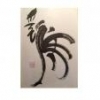
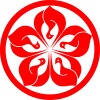



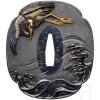





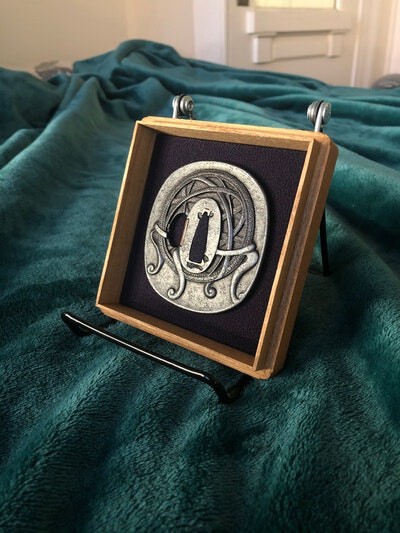
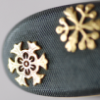

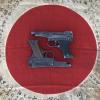
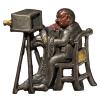
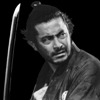
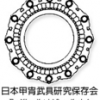

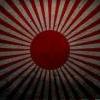
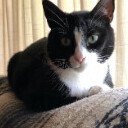


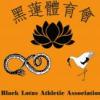





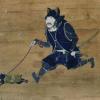

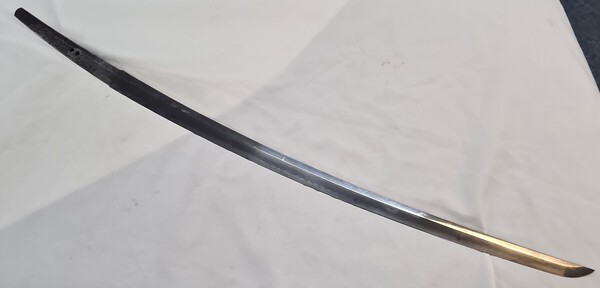
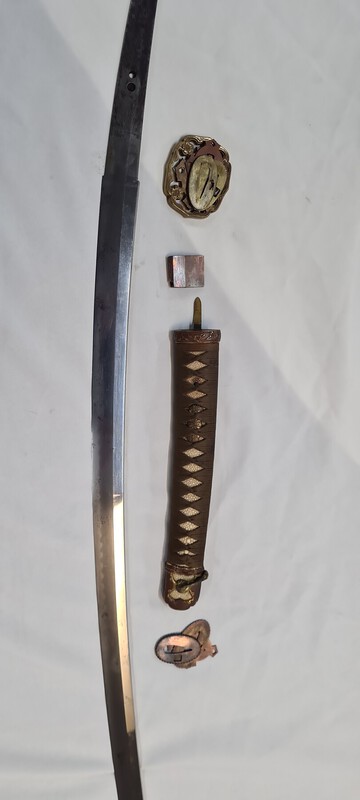


.thumb.jpg.08d475f33f4b85363a5daac6060b18ed.jpg)
